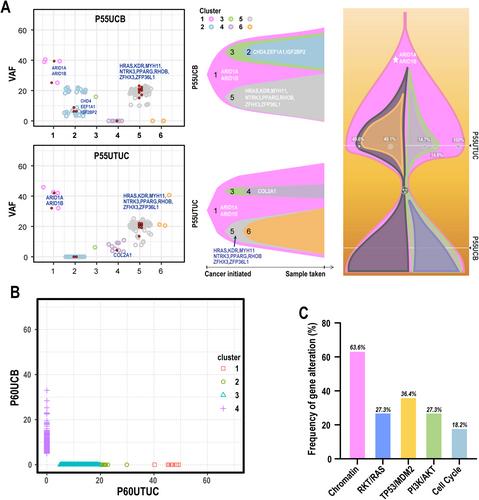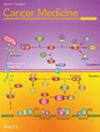Genetic Alterations in Chromatin Regulatory Genes in Upper Tract Urothelial Carcinoma and Urothelial Bladder Cancer
Abstract
Purpose
Upper tract urothelial carcinoma (UTUC) and urothelial carcinoma of the bladder (UCB) share histomorphological and therapeutic features but distinct epidemiologic and clinicopathologic characteristics. We examined alterations of chromatin regulatory genes in molecular subtypes, clonal relatedness, and T-cell receptor (TCR) diversity in UTUC and UCB.
Materials and Methods
Targeted next-generation sequencing or whole-exome DNA sequencing and TCR sequencing were conducted with 34 UTUC and 49 UCB specimens from 63 patients. Tumors were subtyped based on the expression of CK5 and GATA3. Results of tissue microarray of 78 muscle-invasive bladder cancer (MIBC) samples were used as prognostic factors of different subtypes of MIBC.
Results
Chromatin regulatory genes were frequently mutated in both UTUC and UCB. Rapid relapse and progression of non-MIBC are correlated with alterations of KMT2C and EP300. Frequency of alterations in chromatin regulatory genes is higher in UTUC patients with SBS22 and SBS2 signatures and lower in UCB patients with SBS2 and SBS6 signatures. GATA3 and CK5 double-positive patients with higher frequencies of SMARCA4, ARID1A, and EP300 mutations have better prognoses than patients with basal subtypes. Although UTUC and UCB in the same patient can be either clonally related or developed independently, mutated genes in chromatin pathway were enriched in the related clones. Compared to UTUC, UCB had more deleterious mutations in DNA damage repair (DDR) genes, higher levels of tumor mutation burden (TMB) and copy number variations (CNVs), as well as higher TCR clonality and lower TCR diversity.
Conclusions
Since genetic alterations of the chromatin pathway genes are important in both UTUC and UCB, they could serve as potential biomarkers for predicting disease progression and therapeutic targets. Differences in mutation frequencies of DDR pathway, TMB, CNV, and TCR might be the contributing factors for the distinct responses to immune checkpoint inhibitor (ICI) between UTUC and UCB.


 求助内容:
求助内容: 应助结果提醒方式:
应助结果提醒方式:


